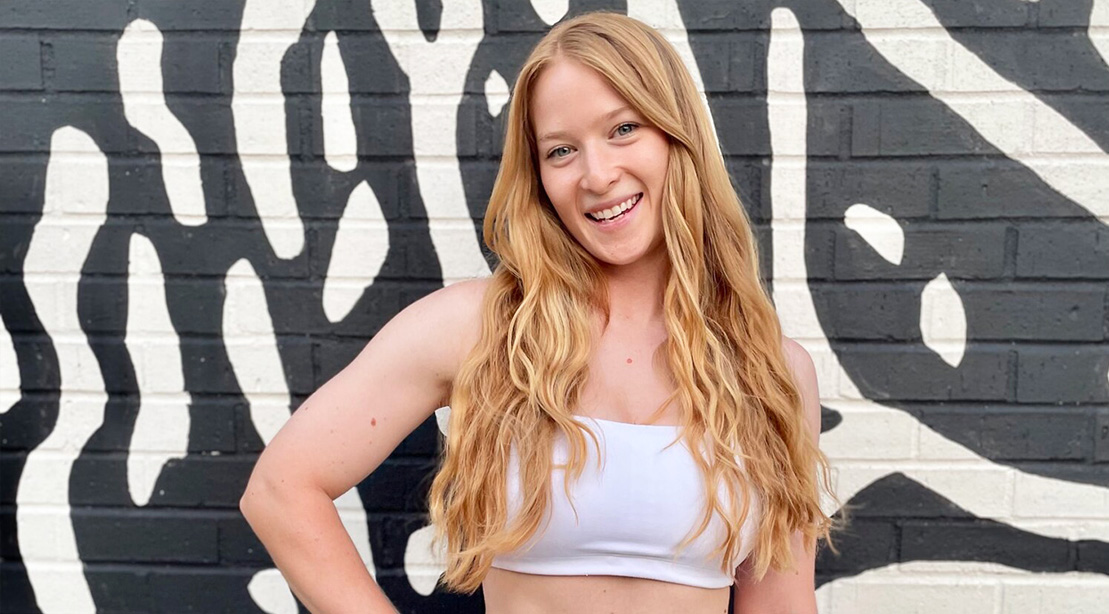28-Days-to-Lean Meal Plan
With the right plan and the right discipline, you can get seriously shredded in just 28 days.
Read article

As gyms get bigger and host an ever-increasing inventory of over-complicated new equipment, it’s no wonder that many of us find ourselves wandering aimlessly throughout our workout sessions failing to make any measurable progress. Fortunately, if you’re hoping to get strong for the first time, or feel like you’ve reached a plateau with your strength and conditioning, the answer might be simpler than you think, according to Laura Lee Crabbe.
As a certified personal trainer and nutritionist who works with the digital fitness app, Caliber, Crabbe says that over complicating things can lead to a myriad of mistakes.
“Something I’m seeing a lot lately is people following random workouts from social media, thinking that they need to switch up their workout routine every week in order to ‘shock’ their muscles,” says Crabbe. “I think those posts are great for inspiration, but it’s not necessary to continually change the exercises in your workout routine. There is a lot of fitness advice and routines out there, so it can be really overwhelming knowing where to start and what information to follow, or which equipment to use. Sticking to a basic lifting routine with five to six exercises for several weeks is a great way for you to build consistency and see results.”

“I made a lot of mistakes in the beginning of my fitness journey, as I think many of us do!” shares the PT, who first fell in love with fitness when she began weight training in 2017. In college, Crabbe had suffered with an eating disorder, and admits that she over-exercised, suffering with low self-esteem and issues with anxiety. By concentrating more on lifting, and perfecting her form, she began to feel much more confident, both mentally and physically, and wanted to share the benefits of strength training, eventually becoming a NASM certified personal trainer and qualified nutrition coach. Crabbe specializes in women’s fitness and is qualified to give virtual coaching. “I used to do way too many exercises in one session, not take enough rest time between sets, and I increased the weight before I had the proper form down, resulting in a lot of relearning,” she says.
“The concept of push and pull is important to be aware of when you’re training because it’s functional to everyday life,” says Crabbe. “Pulling a box down from a top shelf in the closet, pushing a heavy door closed, or bending over to pick up something you dropped; These are
all movements we use on a daily basis, so it makes sense to practice them in the gym to get stronger and learn correct form. And, by separating muscle groups for your workout into push and pull movements, you’re making sure that each muscle group is getting the proper amount of attention, and this can help correct muscle imbalances, improve posture, and prevent injury.
“Push movements work the anterior muscles consisting of the chest, triceps, shoulders, and quadriceps, whereas Pull movements work the posterior muscles, which include the back, biceps, and hamstrings. When you split these muscle groups into separate workouts, you can train them one day after the other, while still allowing your other muscles to rest and recover. It’s a way of training that can help maximize your efficiency in the gym, while also helping you perform these foundational movements correctly in day-to-day life.” You’ll notice that although Crabbe’s workouts will tax the whole body, they don’t need any special machines. Just a dumbbell, barbell, and a weighted plate.
The PT says that she has been following the principles behind this workout split for around one year and is still hitting PRs. Her advice? “Be realistic with the training plan you set for yourself,” offers Crabbe.” If you don’t have a lot of experience with strength training or fitness in general, try starting out in the gym three times a week for 30 minutes per session. Focus on compound movements and the basic exercises like squats, deadlifts and bench press. Don’t over complicate your workouts, and don’t do too much at once, or you’ll burn yourself out. Don’t give up if you don’t see results immediately. Sustainable progress takes many weeks to form, and you’ll often notice positive changes in your energy levels or mood before you start to see a difference in muscle definition or size.”
Crabbe says that lifting weight is far more likely to make women look toned and fit rather than bulky. “For me, personally, I love how energized I feel day-to-day when I strength train consistently. But it’s also a way that I can take care of my mental health. I know that moving my body helps reduce anxiety and stress and is one of my main forms of self-care. Lifting heavy is also extremely empowering for me. If I can start my day off by bench pressing my own bodyweight, I know that I can take on anything else that comes my way!”
Whether you are just starting out on your strength building journey, or feel like you have gone off the rails and need to bring your routine back to basics to break a plateau, Crabbe says that a simple 3-day split makes for a great foundation. “Each workout begins with compound movements, meaning they work multiple muscle groups at the same time,” she says. “Followed by accessory and isolation exercises. Compound movements should be performed at the beginning of a workout, that way you have the most energy for those difficult exercises. Execute these workouts consistently for several weeks, focusing on progressive overload, meaning that you will increase the weight or repetitions from week to week, when you feel able, in order to build strength.”
(Click here to get Laura Lee’s workout split on the Caliber app)